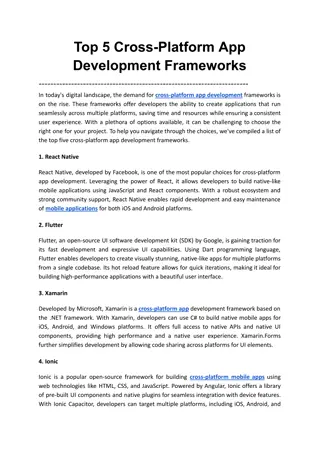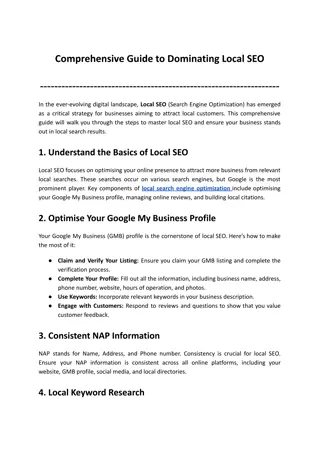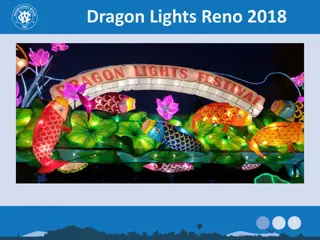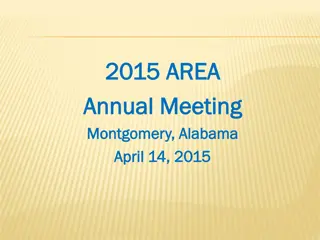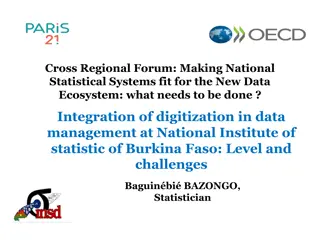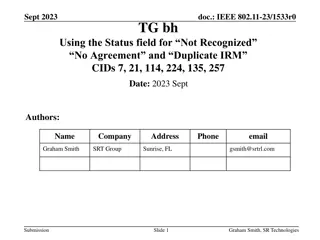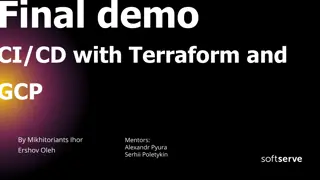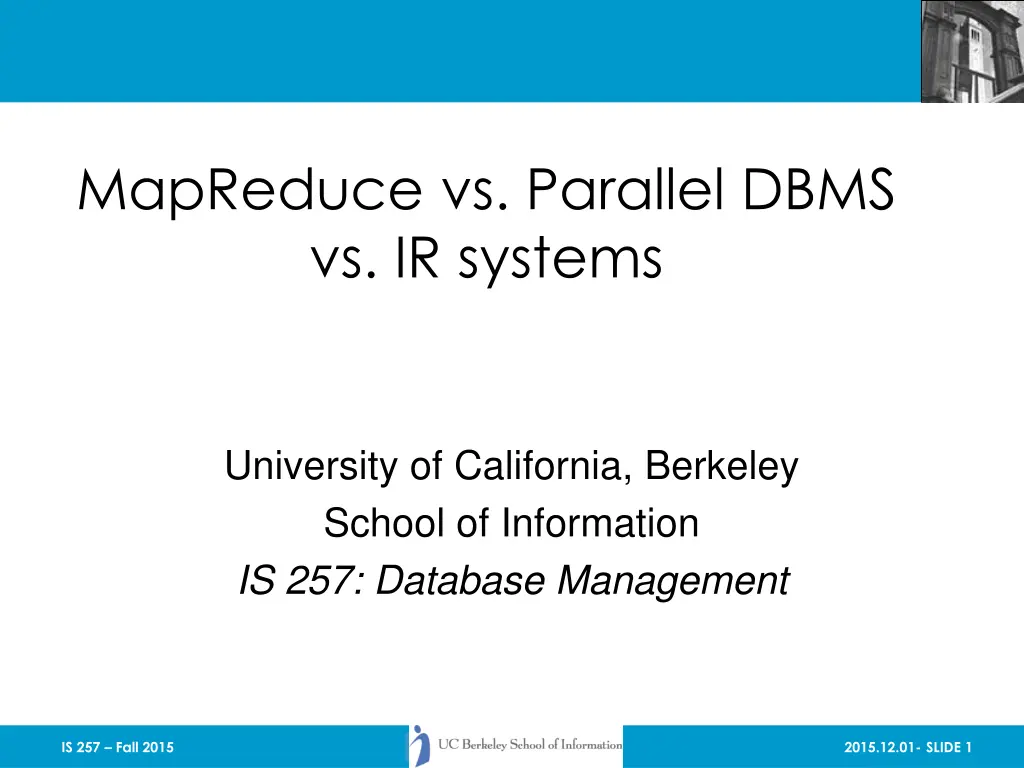
Big Data Technologies Comparison and Future Systems
Explore the differences between MapReduce, Parallel DBMS, and IR systems in the context of big data technologies. Uncover insights on which systems to use for specific situations and considerations for the future of data processing systems. Dive into the advantages of RDBMS and the capabilities and limitations of IR systems in managing data effectively.
Download Presentation

Please find below an Image/Link to download the presentation.
The content on the website is provided AS IS for your information and personal use only. It may not be sold, licensed, or shared on other websites without obtaining consent from the author. If you encounter any issues during the download, it is possible that the publisher has removed the file from their server.
You are allowed to download the files provided on this website for personal or commercial use, subject to the condition that they are used lawfully. All files are the property of their respective owners.
The content on the website is provided AS IS for your information and personal use only. It may not be sold, licensed, or shared on other websites without obtaining consent from the author.
E N D
Presentation Transcript
MapReduce vs. Parallel DBMS vs. IR systems University of California, Berkeley School of Information IS 257: Database Management IS 257 Fall 2015 2015.12.01- SLIDE 1
Announcement Sign up for final project presentations http://doodle.com/poll/46ivgbr5b73yzagr IS 257 Fall 2015 2015.12.01- SLIDE 2
Outline Review BDAS and Spark Slides from Ion Stoica What technologies to use What s happening with DBMS Mike Stonebraker IS 257 Fall 2015 2015.12.01- SLIDE 3
BDAS and Applications The Berkeley Data Analytics Stack talk from Ion Stoica IS 257 Fall 2015 2015.12.01- SLIDE 4
What to use? An ongoing question in this course, and in application of various big-data technologies is which to use for a particular situation The question is what is the system of the future 2015.12.01- SLIDE 5
MapReduce and Hadoop As you have heard MapReduce-based processing is very powerful and can be used in many situations There are, however, latency problems (some largely solved by Spark or Impala) and not all tasks are really as batch- oriented as MR tends to be The Hadoop tools provide very powerful and useful abstractions, but still have the batch-oriented character of MR 2015.12.01- SLIDE 6
Advantages of RDBMS Relational Database Management Systems (RDBMS) available for almost any system or special need when dealing with almost any data type Possible to design complex data storage and retrieval systems with ease (and without conventional programming). Support for ACID transactions Atomic Consistent Independent Durable 2015.12.01- SLIDE 7
IR Systems There are many commercially available, as well as open source and freely available IR search engines E.g. Apache SOLR and Lucene run much of the website search for major companies today These search engines are embracing Big Data approaches E.g. Cloudera Search The main limitation for IR systems is that they seldom support data update or transactions well 2015.12.01- SLIDE 8
Advantages of RDBMS Support for very large databases Automatic optimization of searching (when possible) RDBMS have a simple view of the database that conforms to much of the data used in business Well suited for transactional data with lots of updates, replacements, etc. Standard query language (SQL) 2015.12.01- SLIDE 9
But will it be a RDBMS? About 10 years ago, Mike Stonebraker (one of the people who helped invent Relational DBMS) suggested that the One Size Fits All model for DBMS is an idea whose time has come and gone This was also a theme of the Claremont Report RDBMS technology, as noted previously, has optimized on transactional business type processing But many other applications do not follow that model IS 257 Fall 2011 2015.12.01- SLIDE 10
Will it be an RDBMS? Stonebraker predicts that the DBMS market will fracture into many more specialized database engines Although some may have a shared common frontend Examples are Data Warehouses, Stream processing engines, Text and unstructured data processing systems The latter is basically IR systems IS 257 Fall 2011 2015.12.01- SLIDE 11
Will it be an RDBMS? Streaming data, such as Wall St. stock trade information is badly suited to conventional RDBMS (other than as historical data) The data arrives in a continuous real-time stream But, data in RDBMS has to be stored before it can be read and actions taken on it This is too slow for real-time actions on that data Stream processors function by running queries on the live data stream instead May be orders of magnitude faster IS 257 Fall 2011 2015.12.01- SLIDE 12
Will it be an RDBMS RDBMS will still be used for what they are best at business-type high transaction data But specialized DBMS will be used for many other applications Consider Oracle s acquisions of SleepyCat (BerkeleyDB) embedded database engine, and TimesTen main memory database engine specialized database engines for specific applications IS 257 Fall 2011 2015.12.01- SLIDE 13
Some things to consider Bandwidth will keep increasing and getting cheaper (and go wireless) Processing power will keep increasing Moore s law: Number of circuits on the most advanced semiconductors doubling every 18 months With multicore chips, all computing is becoming parallel computing Memory and Storage will keep getting cheaper (and probably smaller) Storage law : Worldwide digital data storage capacity has doubled every 9 months for the past decade IS 257 Fall 2011 2015.12.01- SLIDE 14
But that was 10 years ago Stonebraker was recently awarded the IEEE Test of Time award for that paper His acceptance speech summarizes the ideas and updates them for today https://www.youtube.com/watch?v=9K0S Ws1mOD0 IS 257 Fall 2015 2015.12.01- SLIDE 15

